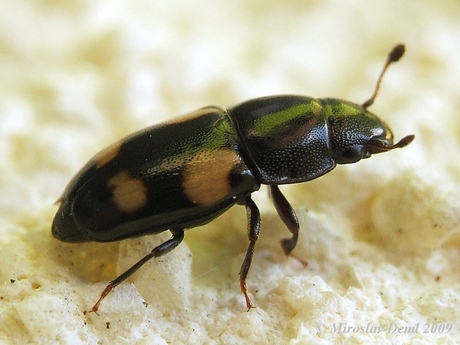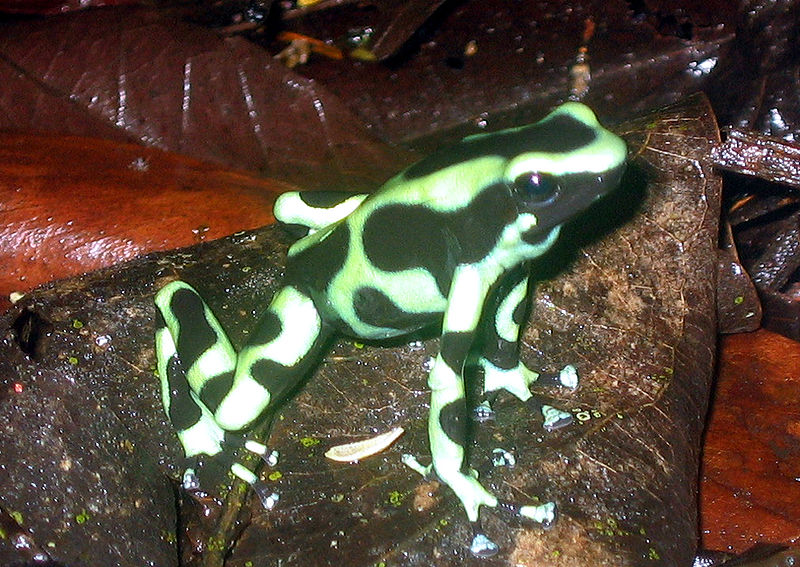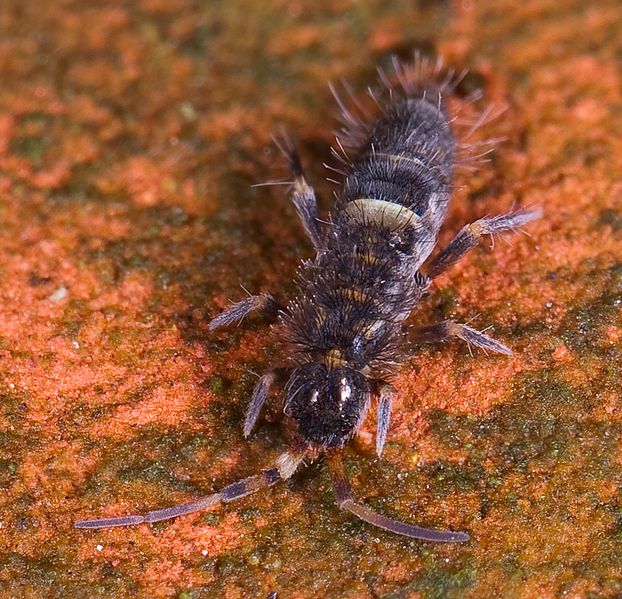Keepers of Poison Frogs, Mantellas, newly-transformed frogs, and other tiny amphibians face difficulties in providing their charges with a varied diet. Wild frogs consume dozens to hundreds of invertebrate species, but captives are usually limited to fruit flies, flour beetles, pinhead crickets and springtails. Vitamin/mineral supplements help, but dietary variety remains critical.
Throughout my career at the Bronx and Staten Island Zoos, I have relied heavily upon wild-caught invertebrates. I recently “re-discovered” an old favorite – the various Sap or Picnic Beetles (Family Nitidulidae). I first used Sap beetles when rearing Wood Frog metamorphs decades ago, and later fed them to Spring Peepers, Red-Eyed Treefrogs, Poison Frogs and others in zoo collections. Many small amphibians will eagerly gobble up Sap Beetles, but Poison Frog and Mantella keepers will find them especially useful. Sap Beetles never fail to bring an enthusiastic feeding response, and can save us some time and money while providing nutrients missing from standard foods.
Natural History
Sap Beetles are classified in the Family Nitidulidae, which contains nearly 3,000 members. Most top out at 1/8 inch, with the largest barely reaching ¼ inch in length. Several species, commonly known as “Picnic Beetles”, show up when sweet foods are served outdoors. Some feed upon over-ripe fruits, corn and other crops, while others take nectar, sap, fungi and carrion. Read More »
 That Reptile Blog – Reptile, Amphibian and Exotic Pet Care and Information
That Reptile Blog – Reptile, Amphibian and Exotic Pet Care and Information




 Springtails are minute, primitive, wingless insects classified in the Order Collembola. Over 6,000 species are found in most temperate and tropical habitats, where they figure importantly in the diets of Poison Frogs (Dendrobates, Phyllobates, Oophaga), small salamanders and newly metamorphosed amphibians of many kinds. Please see
Springtails are minute, primitive, wingless insects classified in the Order Collembola. Over 6,000 species are found in most temperate and tropical habitats, where they figure importantly in the diets of Poison Frogs (Dendrobates, Phyllobates, Oophaga), small salamanders and newly metamorphosed amphibians of many kinds. Please see  The diets of captive Poison Frogs (Dendrobates, Phyllobates, Oophaga), Mantellas, small salamanders (i.e. Red-Backed Salamanders) and tiny, newly-transformed amphibians are usually limited to the two readily available foods of appropriate size – pinhead crickets and fruit flies. The minute, wingless insects known as Springtails (Order Collembola) are easy to procure and rear, and offer a convenient means of increasing dietary variety for small amphibians.
The diets of captive Poison Frogs (Dendrobates, Phyllobates, Oophaga), Mantellas, small salamanders (i.e. Red-Backed Salamanders) and tiny, newly-transformed amphibians are usually limited to the two readily available foods of appropriate size – pinhead crickets and fruit flies. The minute, wingless insects known as Springtails (Order Collembola) are easy to procure and rear, and offer a convenient means of increasing dietary variety for small amphibians. Some amphibians are so small that even pinhead crickets prove too large a meal. I’ve run into this situation with Kihansi Spray Toads (Nectophrynoides asperginis), which are a mere ¾ inch long when full grown. These toads, now likely extinct in the wild, give birth to fully formed toadlets that are so small as to be barely visible. A steady supply of Springtails was essential to the successful rearing of these Tanzanian natives, the last of their kind on earth. Folks breeding other tiny amphibians, such as Strawberry Poison Frogs (Oophaga pumilio), will also find Springtail colonies an invaluable resource.
Some amphibians are so small that even pinhead crickets prove too large a meal. I’ve run into this situation with Kihansi Spray Toads (Nectophrynoides asperginis), which are a mere ¾ inch long when full grown. These toads, now likely extinct in the wild, give birth to fully formed toadlets that are so small as to be barely visible. A steady supply of Springtails was essential to the successful rearing of these Tanzanian natives, the last of their kind on earth. Folks breeding other tiny amphibians, such as Strawberry Poison Frogs (Oophaga pumilio), will also find Springtail colonies an invaluable resource.